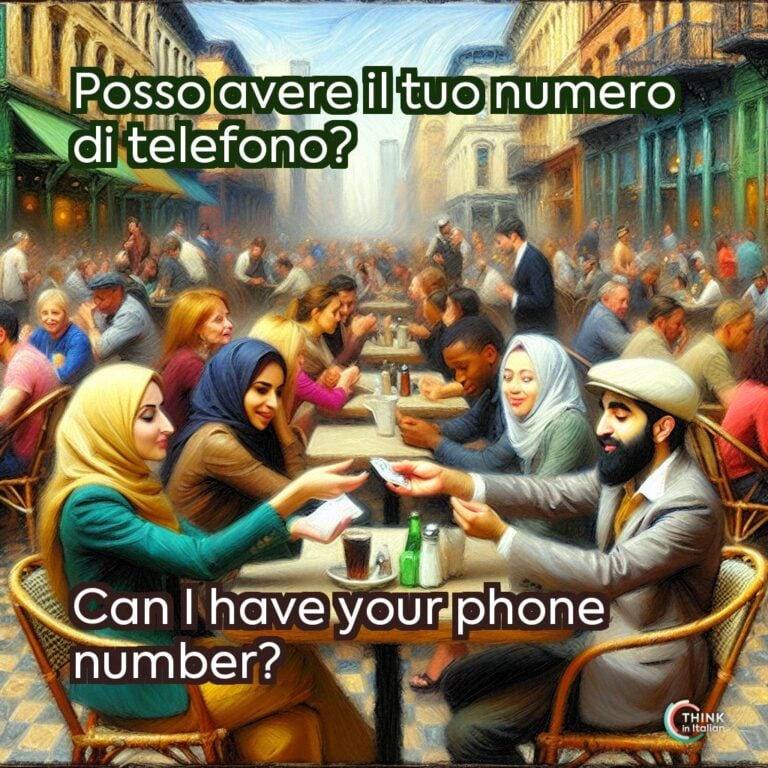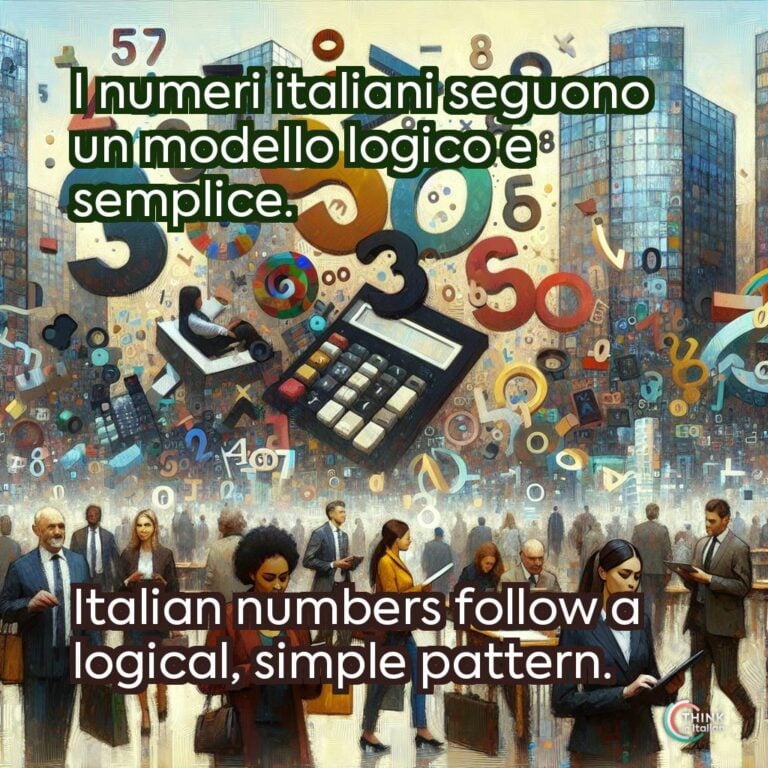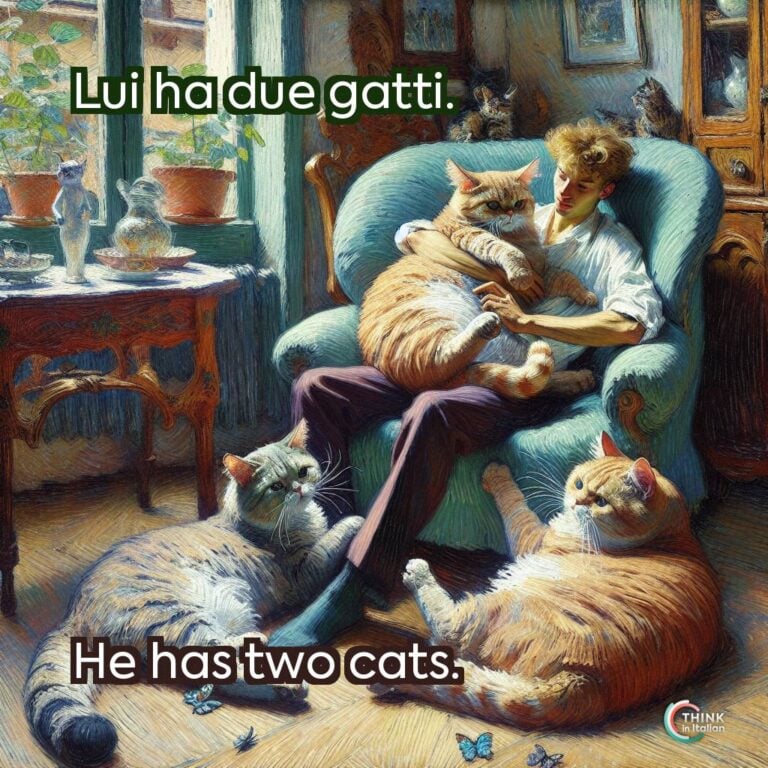How to Count in Italian
When learning a foreign language, numbers are one of the most essential topics to master. Whether you’re buying groceries, telling the time, exchanging phone numbers, or telling the date, numbers are everywhere.
Unlike other languages, Italian numbers follow a logical system, making them easy to learn and invaluable for daily interactions.
In this guide I will walk you through everything you need to know about Italian numbers, from the basics to cultural nuances.
Numbers in Italian
From 0 to 10
Let’s start from the basics. Here are Italian numbers from 0 to 10:
- 0 – Zero
- 1 – Uno
- 2 – Due
- 3 – Tre
- 4 – Quattro
- 5 – Cinque
- 6 – Sei
- 7 – Sette
- 8 – Otto
- 9 – Nove
- 10 – Dieci
With these, you can already express age, prices, or basic quantities.
From 11 to 100
The pattern is a bit tricky with numbers from 11 to 20: for numbers 11 to 16, the digit comes before the word dici (ten). Starting from 17, dici comes first:
- 11 – Undici
- 12 – Dodici
- 13 – Tredici
- 14 – Quattordici
- 15 – Quindici
- 16 – Sedici
- 17 – Diciasette
- 18 – Diciotto
- 19 – Diciannove
- 20 – Venti
From 21 onward, numbers combine tens and units, with some exceptions for numbers starting with vowels. For example, drop the final vowel of the tens when pairing with uno or otto.
- 21 – Ventuno
- 22 – Ventidue
- 23 – Ventitré
- 24 – Ventiquattro
- 25 – Venticinque
- 26 – Ventisei
- 27 – Ventisette
- 28 – Ventotto
- 29 – Ventinove
- 30 – Trenta
Also, as you might have noticed, you must always use an acute accent when combining tens with tre. Now that you’ve learned the pattern, you can do all the other tens, as the same pattern applies for all of them:
- 40 – Quaranta
- 50 – Cinquanta
- 60 – Sessanta
- 70 – Settanta
- 80 – Ottanta
- 90 – Novanta
- 100 – Cento
Numbers Over 100
Italian numbers remain logical as they grow larger. You simply combine digits with cento” (100), mille (1000), or larger units.
- 200 – Duecento
- 500 – Cinquecento
- 1,000 – Mille
- 2,000 – Duemila
- 10,000 – Dieci mila
- 100,000 – Cento mila
- 1,000,000 – Un milione
- 1,000,000,000 – Un miliardo
Mathematical Expressions and Ordinal Numbers in Italian
Fractions might come in handy, for instance when ordering food at a grocery shop.
Vorrei avere un terzo di quella pagnotta.
I’d like one third of that loaf.
- ½ – Un mezzo
- ⅓ – Un terzo
- ¾ – Tre quarti
- + – più: Tre più due = 3 + 2
- – – meno: Sette meno cinque = 7 – 5
- × – per: Quattro per tre = 4 × 3
- ÷ – diviso: Dieci diviso due = 10 ÷ 2
Italian ordinal numbers follow a very straightforward pattern, except for the first 10 numbers:
- Primo (first)
- Secondo (second)
- Terzo (third)
- Quarto (fourth)
- Quinto (fifth)
- Sesto (sixth)
- Settimo (seventh)
- Ottavo (eighth)
- Nono (ninth)
- Decimo (tenth)
For numbers beyond ten, Italian ordinal numbers are formed by adding the suffix -esimo to the stem of the cardinal number:
- Undicesimo (eleventh)
- Dodicesimo(twelfth)
- Tredicesimo (thirteenth)
- Ventesimo (twentieth)
- Trentesimo (thirtieth)
- Centesimo (hundredth)
Numbers in Italian Culture
Numbers hold cultural significance in Italy, sometimes even superstition. The most famous one is the number 17, which is considered unlucky.
The reason stems from the Roman numeral XVII. If rearranged, it spells VIXI, translating into “I have lived”, and therefore meaning to be dead.
Keep in Mind
Keep in mind that, unlike English, in Italian there are no shortcuts: we always say millecento for 1,100, and never “eleven hundred”.
A similarity to English, instead, is that mille, un milione, and un miliardo change in number. While mille is the singular form standing for “one thousand”, the word mila must be used for plurals.
In the same way, we must use appropriate plural endings for milioni and miliardi.






